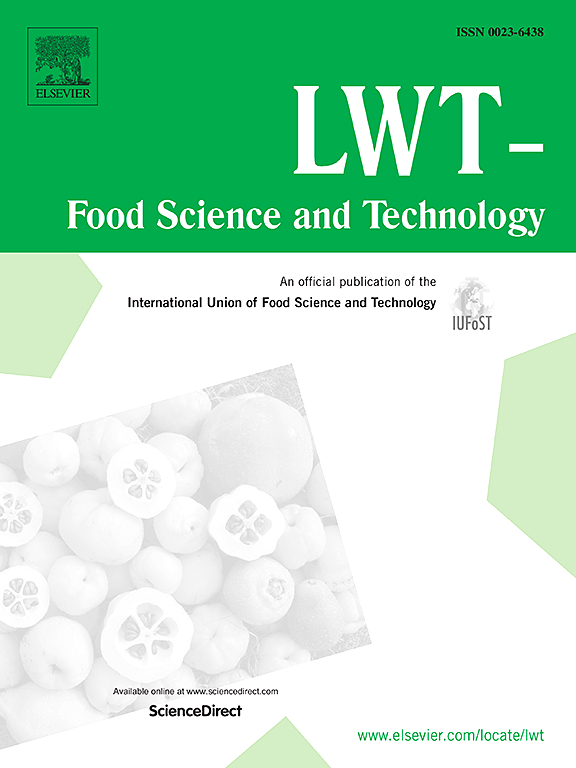Construction of anti-bubble microcapsule based on Pickering emulsion stabilization system and its protective effect on probiotics
IF 6.6
1区 农林科学
Q1 FOOD SCIENCE & TECHNOLOGY
引用次数: 0
Abstract
In this study, Limosilactobacillus fermentum CECT 5716 was used as a model strain to prepare anti-bubble microcapsule through a double emulsion method, based on the interfacial stability of Pickering emulsions, thus achieving the encapsulation of probiotics by gas. The encapsulation rate of the anti-bubble microcapsule was 66.71% with an average particle size of 42.18 μm. Compared to the free strain, the anti-bubble microcapsule exhibited a reduction of 3.31 Log CFU/g and 1.22 Log CFU/g in simulated gastric and bile salt fluid, respectively, but a slight increase of approximately 0.17 Log CFU/g in simulated intestinal fluid. Furthermore, the number of viable bacteria in anti-bubble microcapsule remained above 1 × 107 CFU/g after 35 d of storage at room temperature. These findings suggested that the gas layer can effectively serve as a protective wall material to encapsulate probiotics, safeguarding them from the external environment.
基于皮克林乳液稳定体系的防泡微胶囊的构建及其对益生菌的保护作用
本研究以发酵limmosilactobacillus fermentum CECT 5716为模型菌株,基于Pickering乳剂的界面稳定性,采用双乳法制备抗泡微胶囊,实现益生菌的气包化。抗泡微胶囊的包封率为66.71%,平均粒径为42.18 μm。与自由应变相比,抗泡微胶囊在模拟胃盐液和胆盐液中分别降低了3.31 Log CFU/g和1.22 Log CFU/g,但在模拟肠液中略有增加,约为0.17 Log CFU/g。室温保存35 d后,抑泡微胶囊内活菌数保持在1 × 107 CFU/g以上。这些结果表明,气体层可以有效地作为保护壁材料包裹益生菌,保护益生菌免受外界环境的影响。
本文章由计算机程序翻译,如有差异,请以英文原文为准。
求助全文
约1分钟内获得全文
求助全文
来源期刊

LWT - Food Science and Technology
工程技术-食品科技
CiteScore
11.80
自引率
6.70%
发文量
1724
审稿时长
65 days
期刊介绍:
LWT - Food Science and Technology is an international journal that publishes innovative papers in the fields of food chemistry, biochemistry, microbiology, technology and nutrition. The work described should be innovative either in the approach or in the methods used. The significance of the results either for the science community or for the food industry must also be specified. Contributions written in English are welcomed in the form of review articles, short reviews, research papers, and research notes. Papers featuring animal trials and cell cultures are outside the scope of the journal and will not be considered for publication.
 求助内容:
求助内容: 应助结果提醒方式:
应助结果提醒方式:


